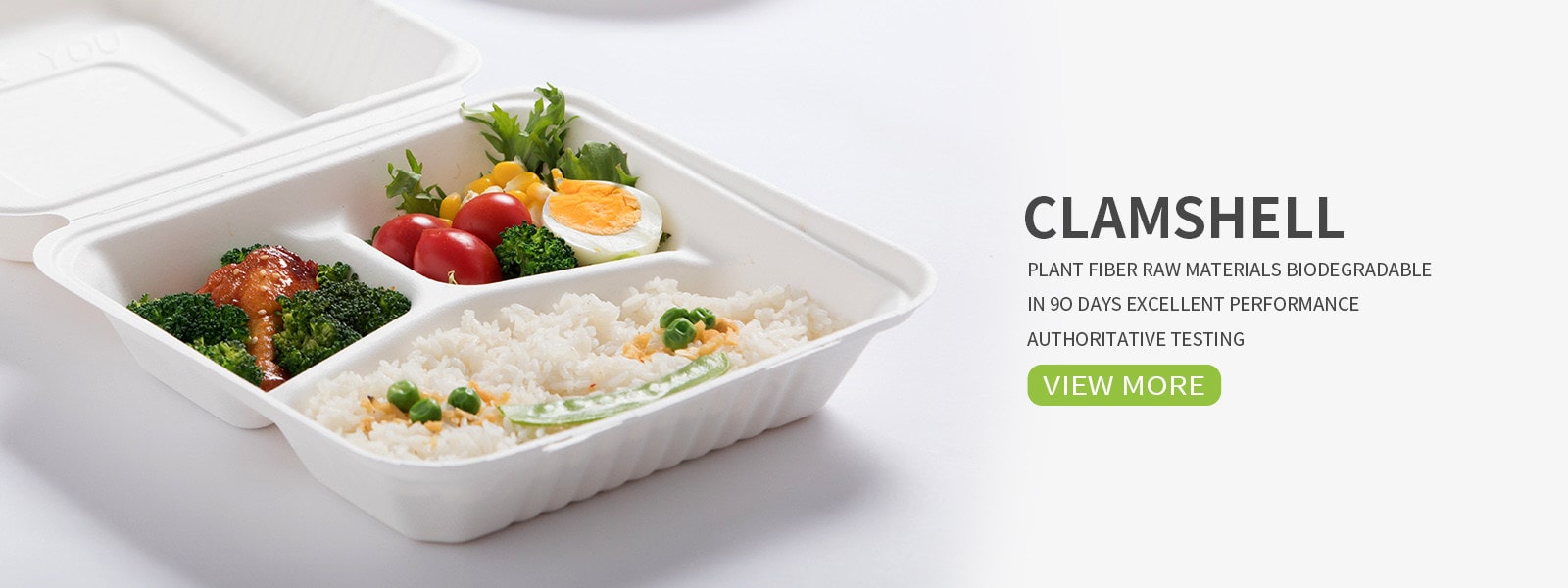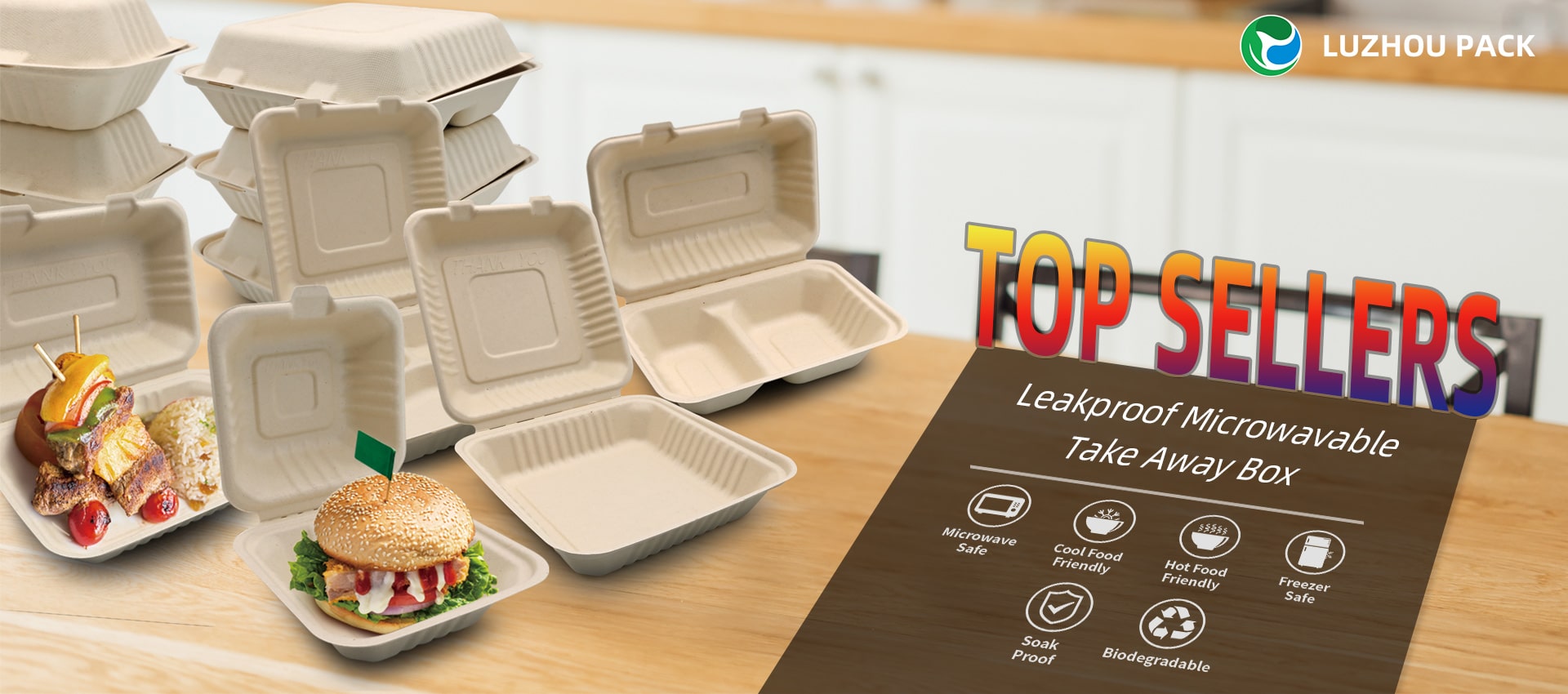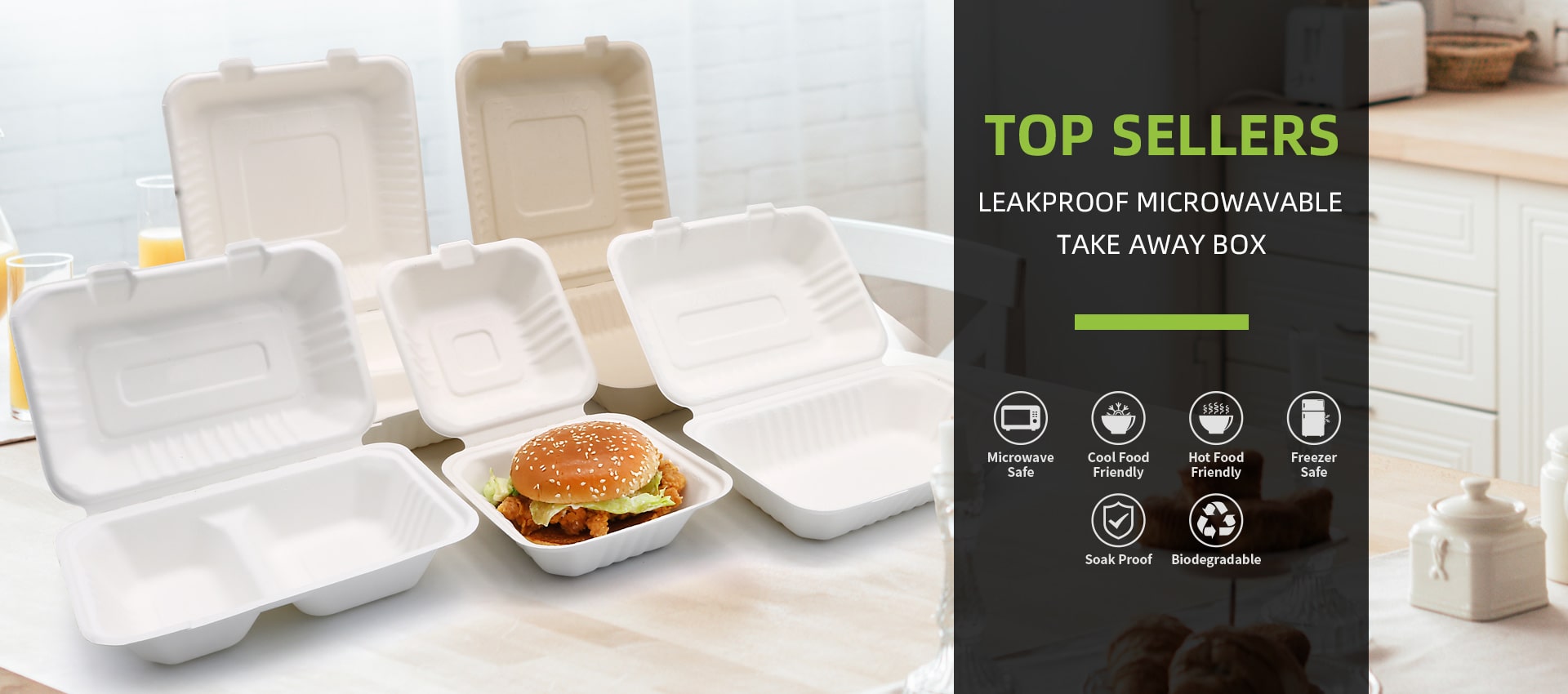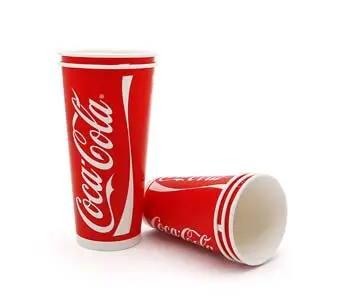In today's rapidly evolving world, where environmental awareness and sustainability have become paramount concerns, finding innovative solutions to reduce waste and minimize environmental impact has become a top priority. One such solution gaining traction is the use of biodegradable food containers. These containers offer a more eco-friendly alternative to traditional plastic packaging, as they are designed to break down naturally over time, leaving behind minimal residues and reducing the burden on landfills.
Definition of Biodegradable Food Containers

Biodegradable food containers refer to packaging materials that are capable of decomposing naturally through biological processes, such as microbial activity or enzymatic breakdown. Unlike traditional plastic containers that persist in the environment for hundreds of years without breaking down, biodegradable containers can degrade into simpler compounds under specific conditions.
This process allows them to be absorbed back into nature without causing long-term harm. It is important to note that not all materials labeled as "biodegradable" are created equal.
Different types of bioplastics and natural materials can be used in their production, each with varying rates of degradation and compostability. Understanding these distinctions is crucial for making informed choices about sustainable packaging options.
Growing Concern for Environmental Sustainability in Canada
In recent years, there has been a significant surge in concern for environmental sustainability within Canada. Canadians are increasingly aware of the detrimental effects of non-biodegradable plastics on ecosystems and wildlife, leading them to seek alternatives that align with their values and contribute positively towards a greener future.
The Canadian government has also taken notable steps towards fostering environmental sustainability by implementing regulations and initiatives aimed at reducing single-use plastic waste. These efforts have further fueled the demand for biodegradable food containers as consumers become more conscious about their choices and actively seek out environmentally friendly options.
Rise in Popularity and Demand for Eco-Friendly Packaging Solutions
As the world becomes increasingly conscious of the pressing need for environmental sustainability, Canada has seen a significant rise in the popularity and demand for eco-friendly packaging solutions, including biodegradable food containers. Consumers are becoming more aware of the detrimental impact that traditional plastic packaging has on our planet, particularly in terms of pollution and waste accumulation.
This growing awareness has led to a shift in consumer preferences towards sustainable alternatives. One of the key factors contributing to the rise in popularity of biodegradable food containers is the increasing number of individuals adopting environmentally conscious lifestyles.
People are actively seeking out products that align with their values and contribute to reducing their ecological footprint. As a result, businesses across Canada have recognized this shift in consumer behavior and are incorporating biodegradable food containers into their packaging strategies.
Government Regulations and Initiatives Promoting the Use of Biodegradable Materials
Recognizing both the environmental benefits and economic potential, Canadian government bodies have implemented regulations and initiatives to promote the use of biodegradable materials in food packaging. These measures aim to reduce plastic waste generation, encourage sustainable practices, and create a greener economy.
The Canadian government has introduced various policies aimed at incentivizing businesses to adopt eco-friendly packaging solutions such as biodegradable food containers. For instance, there are tax incentives for companies that invest in environmentally friendly practices or materials.
Additionally, legislation has been put into place to ensure proper labeling and certification standards for biodegradability claims on product packaging. Such regulations provide consumers with reassurance that they are making informed choices when purchasing products packaged with biodegradable materials.
Advantages of Using Biodegradable Food Containers
Eco Biodegradable food containers offer numerous advantages over traditional plastic counterparts both from an environmental and practical standpoint. Firstly, the use of biodegradable materials helps in reducing waste accumulation by enabling containers to break down naturally over time, minimizing their impact on landfills and ecosystems.
This leads to a significant reduction in plastic waste pollution, which is a pressing issue globally. Furthermore, biodegradable food containers are generally made from renewable resources such as plant-based materials or agricultural waste.
This ensures that the production process has a lower carbon footprint compared to traditional plastic containers derived from fossil fuels. As a result, using biodegradable food containers contributes to mitigating climate change by reducing greenhouse gas emissions.
Types of Biodegradable Materials Used in Food Containers

Plant-based materials:
As the demand for sustainable packaging solutions continues to grow, plant-based materials have emerged as a popular choice for biodegradable food containers in Canada. Among these, cornstarch-based containers have gained considerable prominence. These containers are made from renewable resources, primarily cornstarch, which is derived from the kernels of corn.
The advantage of using cornstarch as a material lies in its ability to break down naturally when exposed to environmental conditions conducive to composting. This means that once discarded, these containers will decompose into organic matter within a relatively short period without leaving behind any harmful residues.
Another plant-based material widely used for food packaging is bagasse. Biodegradable sugarcane packaging is made from the leftover fibrous residue obtained after extracting juice from sugarcane stalks.
This waste material is transformed into sturdy and heat-resistant food containers that can safely hold hot or cold food items. Bagasse is both renewable and abundant in Canada due to its thriving sugar industry, making it an ideal choice for sustainable packaging options.
Mushroom packaging:
Mushroom packaging, also known as mycelium-based containers, has garnered attention due to its unique and eco-friendly properties. These innovative biodegradable food containers are made by combining agricultural waste (such as straw or wood chips) with mushroom roots called mycelium. Under controlled conditions, the mycelium grows and binds together the waste materials, forming a strong and flexible structure that can be shaped into various container forms.
The remarkable aspect of mushroom packaging lies in its ability to biodegrade within weeks when discarded properly. It decomposes naturally without requiring industrial composting facilities or leaving any harmful residues behind.
This sustainable approach not only reduces plastic waste but also utilizes agricultural byproducts that would otherwise be discarded. Mushroom packaging showcases the potential of harnessing nature's own processes to create biodegradable food containers that have minimal impact on the environment.
Edible packaging:
In a fascinating development within the realm of sustainable food packaging, edible containers have emerged as a unique solution. Seaweed-based containers are leading the way in this category, offering an innovative and environmentally friendly alternative to traditional packaging materials. These containers are made entirely from seaweed, a renewable resource abundantly found along Canada's coastlines.
Seaweed-based containers possess the extraordinary feature of being completely edible and safe for consumption. They can be consumed along with the food they hold, eliminating the need for wasteful disposal.
In addition to their biodegradability, these containers provide an excellent source of dietary fiber and nutrients when eaten. Edible packaging exemplifies how sustainability can intertwine with convenience and nutrition, presenting a novel solution for reducing plastic waste while enhancing our culinary experiences.
Overall, these various types of biodegradable materials offer versatility and sustainability in creating food containers that align with Canada's commitment to environmental conservation. Whether it is plant-based materials like cornstarch or bagasse, mushroom-based packaging utilizing mycelium growth or seaweed-based edible solutions, each material presents distinct advantages while contributing to a greener future for our planet.
Production Process of Biodegradable Food Containers

Extraction or Cultivation of Raw Materials
The production process of biodegradable food containers in Canada begins with the extraction or cultivation of raw materials, depending on the type of container being manufactured. For instance, corn starch food packaging utilizes corn as the primary raw material. The corn kernels are harvested and undergo a milling process to separate the starch from other components such as proteins and fiber.
This starch is then processed further to create a fine powder that can be used in the manufacturing process. Similarly, for biodegradable sugarcane packaging, sugarcane stalks are obtained from sugar mills after extracting juice for sugar production.
The leftover fibrous residue called bagasse is collected and processed to remove impurities before being converted into pulp through mechanical or chemical processes. This pulp serves as a crucial ingredient for creating sturdy and heat-resistant biodegradable food containers.
In the case of mushroom packaging, agricultural waste such as corn husks or rice straw is combined with mushroom roots or mycelium cultures. These materials are then placed in molds where they grow into a solid structure, consuming the waste and forming biodegradable packaging within weeks.
Processing Techniques to Create Container Shapes
Once the raw materials are prepared, various processing techniques are employed to shape them into biodegradable food containers. One commonly used method is extrusion molding, which involves forcing molten material through a die to create continuous profiles with specific cross-sectional shapes. This technique allows for precise control over container dimensions and ensures consistency in production.
Thermoforming is another widely adopted technique where sheets of biodegradable material are heated until pliable and then stretched over molds using vacuum pressure or mechanical force to form container shapes. This method offers flexibility in achieving different sizes and designs while maintaining structural integrity.
In both extrusion molding and thermoforming, the containers' thickness and strength can be adjusted by controlling the temperature, speed, and pressure during the manufacturing process. This enables manufacturers to create biodegradable food containers that meet specific durability requirements for various applications.
Addition of Natural Additives to Enhance Durability and Resistance to Moisture
To enhance the performance of biodegradable food containers, natural additives are often incorporated during the production process. These additives may include starch modifiers, plasticizers, or moisture-resistant agents derived from plant-based sources. Starch modifiers help improve material flexibility and prevent brittleness by modifying the structure of starch molecules.
Plasticizers are added to enhance material elasticity, making it easier to shape containers without compromising their integrity. Additionally, moisture-resistant agents help preserve container quality by reducing water absorption and preventing premature degradation when in contact with wet or oily food items.
The careful selection and addition of these natural additives contribute significantly to enhancing the overall durability and functionality of biodegradable food containers in Canada. Moreover, since these additives are derived from renewable resources rather than synthetic chemicals, they align with sustainable manufacturing practices while ensuring safety for both consumers and the environment.
Environmental Impact: Reduction in Plastic Waste Pollution
The use of biodegradable food containers in Canada offers a significant advantage in reducing plastic waste pollution. Traditional plastic containers take centuries to decompose, contributing to the ever-growing problem of plastic pollution in landfills and oceans.
Biodegradable food containers, on the other hand, are designed to break down naturally within a relatively short period, typically ranging from a few months to a few years. By adopting these eco-friendly alternatives, Canada can make substantial progress in mitigating the environmental consequences caused by persistent plastic waste.
The reduced accumulation of non-biodegradable materials will alleviate pressure on landfill capacities and minimize the risk of harmful microplastics entering ecosystems. Moreover, by embracing biodegradable food containers on a larger scale, Canadian communities can inspire environmentally conscious behavior and foster a culture of sustainable consumption.
Environmental Impact: Decreased Carbon Footprint due to Lower Energy Consumption during Production
The production processes involved in creating traditional plastic containers often require significant energy consumption and emit substantial greenhouse gas emissions. Conversely, biodegradable food containers generally have lower carbon footprints due to the use of renewable resources and more energy-efficient manufacturing techniques.
Biodegradable materials like cornstarch or bagasse have smaller environmental impacts compared to their petroleum-based counterparts. As such, utilizing these materials for food packaging purposes helps mitigate climate change by reducing reliance on fossil fuels and limiting carbon dioxide emissions during both production and degradation processes.
Health Benefits: Absence of Harmful Chemicals Found in Traditional Plastic Containers
Avoiding exposure to harmful chemicals is paramount for ensuring public health and well-being. Biodegradable food containers provide an excellent alternative as they are free from toxic substances commonly found in traditional plastic packaging materials.
In contrast to conventional plastics that can leach harmful additives such as BPA (bisphenol A) and phthalates, biodegradable containers are made from natural materials that do not pose similar risks. This eliminates the potential for chemical contamination of food, supporting safer consumption practices.
Health Benefits: No Leaching or Transfer of Toxins into Food
The absence of leaching or transfer of toxins from biodegradable food containers to the food they hold is a crucial advantage. Traditional plastic containers may release small amounts of harmful substances when exposed to heat or acidic foods, posing health risks to consumers.
Biodegradable food containers are designed to be safe and inert, ensuring that no undesirable substances migrate into the packaged food. This characteristic contributes to an increased level of consumer confidence regarding the safety and purity of their meals, promoting a healthier eating experience overall.
Economic
In addition to their environmental and health benefits, the adoption of biodegradable food containers can also have positive economic implications. While initial costs might be marginally higher than traditional plastic packaging options due to production factors and availability, widespread usage will likely lead to cost reductions in the long run. Furthermore, embracing sustainable packaging solutions aligns with shifting consumer preferences towards eco-friendly products.
Businesses that adopt biodegradable options not only cater to this growing market demand but also enhance their brand reputation as responsible entities committed to environmental stewardship. In such a context, investing in biodegradable food containers can generate economic advantages by attracting environmentally conscious customers and fostering loyalty.
The adoption of biodegradable food containers in Canada brings forth a multitude of benefits for both society and the environment. By reducing plastic waste pollution and minimizing carbon footprints during production processes, these eco-friendly alternatives pave the way towards a more sustainable future.
Moreover, the absence of harmful chemicals and the elimination of toxin leaching into food provide significant health advantages, ensuring a safer and healthier dining experience. Economically speaking, businesses can capitalize on the growing demand for eco-friendly products while enhancing their brand image.
By embracing biodegradable food containers, Canada can take significant strides towards achieving environmental sustainability and inspiring global change. Through these innovative solutions, we can leave a positive impact for future generations – one that prioritizes our planet's health while offering a greener and brighter tomorrow.




